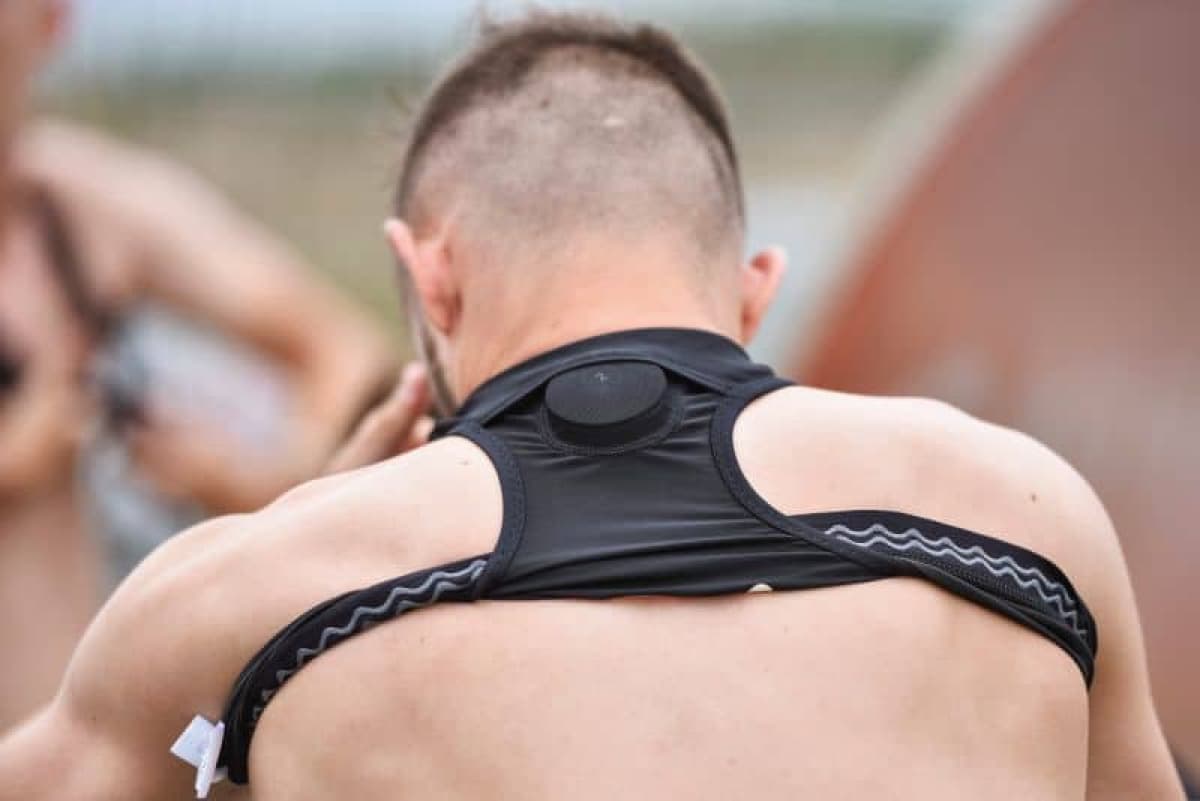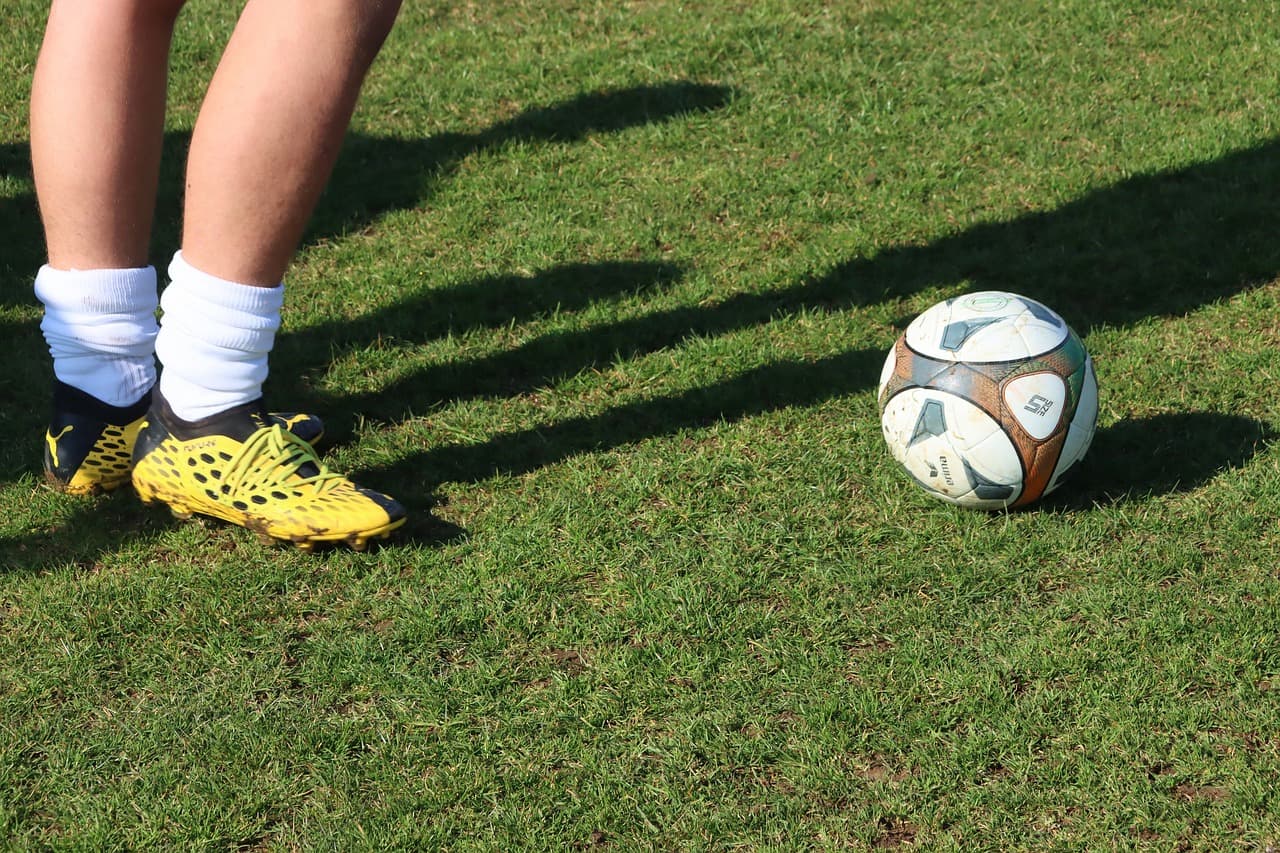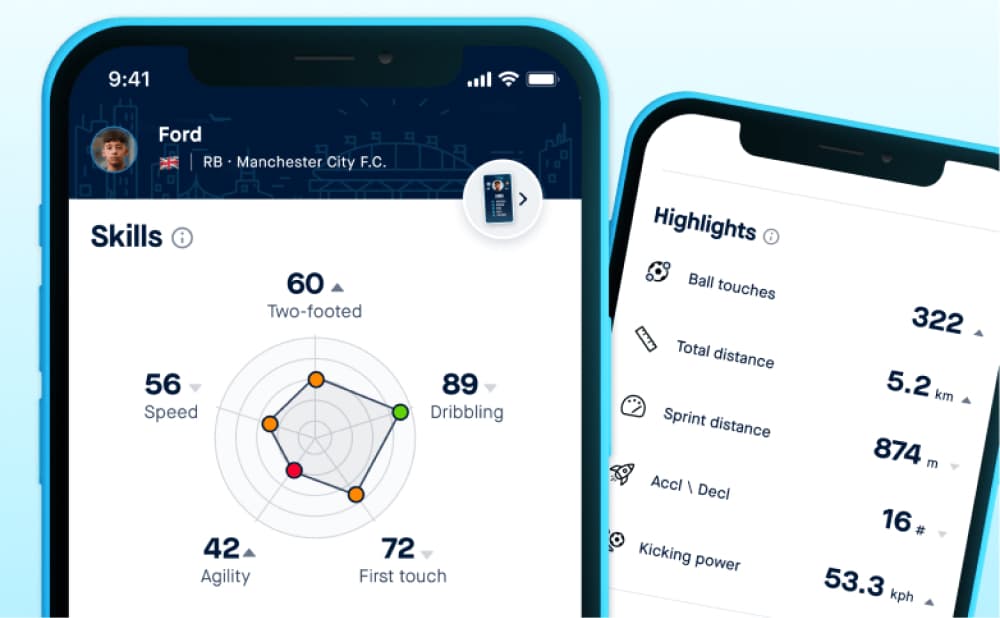Why Is GPS Used in Soccer?
Sports scientists utilize GPS pods to monitor physical activity load, creating a controlled environment that optimizes physical training while minimizing injury risk. The data gathered from these GPS pods allows for the precise tracking of the physical demands during training sessions, offering coaches accurate insights. This data-driven approach enables adjustments in future training sessions based on individual players’ daily and weekly data to identify potential injury compensation, prevent soft-tissue injuries, manage overtraining, and ensure players train within optimal zones, thus enhancing their on-field availability.
Moreover, GPS technology proves invaluable in enhancing player speed and endurance over extended periods. By leveraging metrics like maximal speed, total distance covered, accelerations, and decelerations, coaches and players gain valuable insights into progress and development. This detailed analysis facilitates continuous refinement of training programs to further elevate player performance and development.
Another key benefit of incorporating GPS technology in soccer is enhancing the rehabilitation process for injured players. By utilizing a player’s historical data captured by GPS, a comprehensive physical profile detailing their pre-injury training and performance levels can be established. This tailored approach ensures that players receive targeted and efficient rehabilitation, preparing them effectively for their return to training and match readiness.
Why Do Soccer Players Wear GPS Vests?
Soccer players wear GPS vests to track their performance metrics, reduce the risk of injuries, enhance recovery, and improve team performance.
What Does a Soccer GPS Tracker Do?
Soccer GPS trackers provide objective data on player positioning, movement patterns, and team formations. This creates a detailed post-match analysis for performance optimization.
Understanding GPS Vests in Soccer: Performance Tracking and Injury Prevention
Performance Tracking
A GPS tracker vest offers detailed insights into player movement and work rate. Therefore, they allow coaches to tailor training plans and optimize team performance.
Injury Prevention
A GPS tracker vest enables a bold approach to injury prevention; it helps coaches spot early signs of overexertion and adjust training accordingly.
Here are 5 of the common injuries these can prevent:
- Muscle Strains and Tears: GPS vests can monitor player workload and fatigue, helping coaches identify signs of overexertion that lead to muscle strains or tears.
- Hamstring Injuries: GPS vests can track acceleration and deceleration patterns, allowing coaches to manage training drills and the strain on the hamstrings.
- Ankle Sprains: GPS vests can provide insights into player positioning and movement patterns, helping coaches design drills to improve balance, proprioception, and ankle stability, which reduces the risk of sprains.
- Knee Injuries (e.g., ACL Tears): GPS vests also monitor player movement patterns and biomechanics, allowing coaches to determine movement techniques to decrease ACL injuries.
- Overuse Injuries: GPS vests can track player workload over time, helping coaches manage training schedules and implement appropriate rest to stop overuse injuries.
What Data Is Collected By GPS Vests
A soccer GPS tracker vest collects 6 major data points—such as distance covered, speed, positioning, acceleration, deceleration and heart rate.
Let’s break down these important metrics:
Distance and Speed
GPS vests track the distance players cover in training sessions and matches. The data is priceless for coaches and sports scientists because it shows movement patterns and workload distribution.
In addition, coaches can determine high-intensity activity and adjust training regimes accordingly; in turn, this can improve endurance and performance.
Positioning
The GPS coordinates provide information on player positioning. This enables coaches to explore player movements, spatial relationships, and formations to improve team strategies.
Likewise, understanding player positioning helps coaches identify strengths and weaknesses in defensive and offensive formations—allowing more effective game plans.
Acceleration and Deceleration
Monitoring changes in player speed—including acceleration and deceleration rates—is crucial for assessing agility and explosiveness.
It also enables coaches to identify areas for improvement in players’ speed and agility, leading to targeted training interventions.
Work Rate
Work rate data captured by GPS vests measures the intensity of physical efforts throughout training sessions and matches. Coaches can use work rate metrics to assess players’ overall workload and fitness levels.
Impact Force Detection (Advanced Vests)
Advanced GPS vests detect and analyze impacts experienced by players during collisions or falls. This identifies potential injury risks and preventive measures to protect players’ safety.
Analyzing impact data also enables coaches to evaluate the effectiveness of player techniques and interventions to minimize injuries.
How To Use GPS Vest Data For Performance Optimization
Tailored Training Plans
Coaches can design tailored training plans with GPS vests based on individual player metrics. This optimizes performance and minimizes injury risks.
Common training plans include:
- Position-Specific Training: Tailoring training sessions to specific demands. For example, strikers may focus on finishing drills and explosive movements, while defenders work on defensive tactics and aerial duels.
- Endurance and Conditioning: Designing training programs to improve aerobic capacity, endurance, and overall fitness levels.
- Speed and Agility Development: Implementing drills and exercises to enhance speed, agility, and acceleration.
- Strength and Power Training: Combining strength training exercises to build muscular strength and power.
Workload Management
Monitoring player workload enables coaches to manage training intensity effectively, preventing overexertion and ensuring optimal performance.
Examples of workload management include:
- Training Load Monitoring: Coaches and sports scientists track the intensity, duration, and frequency of training sessions using wearable technology or training diaries.
- Rotation and Rest: Coaches rotate players in and out of the starting lineup to ensure that every player is well-rested. This may involve giving key players rest during less important matches.
- Periodization: Coaches structure the training program throughout a season to ensure players peak at the right times. This involves balancing periods of high-intensity training with periods of rest and recovery.
Injury Recovery
GPS vests assist in player rehabilitation by tracking progress and providing insights into workload management during recovery—enabling a safe return to full training and game time.
What Are Some Alternatives To GPS Vests
GPS-based solutions for monitoring athletes’ physical activity have been present in the market for over 20 years. In recent years, new technologies and concepts have emerged as advanced alternatives to GPS solutions. These solutions are designed not only for top elite athletes with support from elite coaching staff but also for semi-professional and grassroots players. They allow for tracking of more valuable metrics with a higher level of accuracy.
Here are some alternatives to a GPS vest:
Playermaker
Playermaker is an outstanding alternative to a GPS vest. When considering whether to use Playermaker instead of GPS vests, there are several factors to take into account:
- Technical performance monitoring: The world’s first Footworn PDS (Player Development System), Playermaker’s technology can analyze and provide feedback on specific technical aspects of a player’s performance, such as ball contact quality, strike power, and running technique. This can be particularly valuable for fine-tuning skills and addressing individual player weaknesses to enhance overall performance on the field.
- Precision and Granularity: Playermaker offers highly detailed and precise data on movements such as footwork, strides, kicks, and other intricate technical aspects of player performance. This level of granularity can provide players and coaches with deeper insights into the player’s technique and biomechanics compared to traditional GPS vests, which primarily focus on broader metrics like distance covered, speed, and acceleration.
- Player Development and Progress Tracking: Playermaker’s detailed data insights can facilitate personalized training programs tailored to individual player needs and skill levels. By tracking progress over time and setting specific goals based on the data analysis, coaches can support players in their continuous development and improvement.
While GPS vests remain valuable tools for tracking overall physical performance and workload management, Playermaker offers a more in-depth analysis of technical aspects and biomechanics, thereby providing a holistic approach to player development, injury prevention, and performance optimization in sports like soccer. - Injury Prevention and Biomechanics: Playermaker’s analysis includes comprehensive biomechanical data that can help identify movement patterns that may increase the risk of injury or lead to suboptimal performance. By addressing these issues proactively, coaches and players can work towards injury prevention and improved biomechanical efficiency, ultimately enhancing player longevity and performance.
You can read our article on the differences between a soccer tracker and GPS vest for more detailed insights.
Watch Irish Player Noelle Franciisco compare Playermaker’s CITYPLAY to her GPS Vest:
Wearable Fitness Trackers
Wearable fitness trackers are also a brilliant alternative. These devices include GPS tracking, heart rate monitoring, and activity tracking.
Sure, they don’t provide the detailed data that GPS systems do—but they can still offer valuable performance insights without requiring bulky vests.
Video Analysis Tools
Another suitable option is video analysis tools. These let coaches and players review footage of games and training sessions to analyze performance.
They don’t offer the same analytics on player movement that a GPS vest soccer can, but they’re a cost-effective alternative that doesn’t require additional equipment during play.








